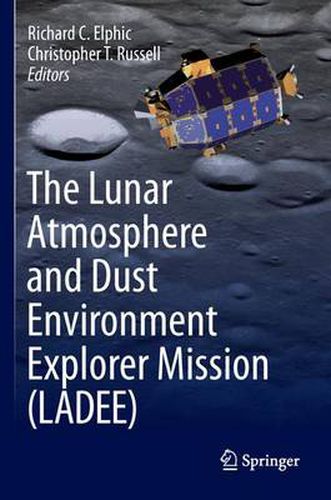Readings Newsletter
Become a Readings Member to make your shopping experience even easier.
Sign in or sign up for free!
You’re not far away from qualifying for FREE standard shipping within Australia
You’ve qualified for FREE standard shipping within Australia
The cart is loading…






This title is printed to order. This book may have been self-published. If so, we cannot guarantee the quality of the content. In the main most books will have gone through the editing process however some may not. We therefore suggest that you be aware of this before ordering this book. If in doubt check either the author or publisher’s details as we are unable to accept any returns unless they are faulty. Please contact us if you have any questions.
This volume contains five articles describing the mission and its instruments. The first paper, by the project scientist Richard C. Elphic and his colleagues, describes the mission objectives, the launch vehicle, spacecraft and the mission itself. This is followed by a description of LADEE’s Neutral Mass Spectrometer by Paul Mahaffy and company. This paper describes the investigation that directly targets the lunar exosphere, which can also be explored optically in the ultraviolet. In the following article Anthony Colaprete describes LADEE’s Ultraviolet and Visible Spectrometer that operated from 230 nm to 810 nm scanning the atmosphere just above the surface. Not only is there atmosphere but there is also dust that putatively can be levitated above the surface, possibly by electric fields on the Moon’s surface. Mihaly Horanyi leads this investigation, called the Lunar Dust Experiment, aimed at understanding the purported observations of levitated dust. This experiment was also very successful, but in this case their discovery was not the electrostatic levitation of dust, but that the dust was raised by meteoroid impacts. This is not what had been expected but clearly is the explanation that best fits the data.
Originally published in Space Science Reviews, Volume 185, Issue 1-4, 2014.
$9.00 standard shipping within Australia
FREE standard shipping within Australia for orders over $100.00
Express & International shipping calculated at checkout
This title is printed to order. This book may have been self-published. If so, we cannot guarantee the quality of the content. In the main most books will have gone through the editing process however some may not. We therefore suggest that you be aware of this before ordering this book. If in doubt check either the author or publisher’s details as we are unable to accept any returns unless they are faulty. Please contact us if you have any questions.
This volume contains five articles describing the mission and its instruments. The first paper, by the project scientist Richard C. Elphic and his colleagues, describes the mission objectives, the launch vehicle, spacecraft and the mission itself. This is followed by a description of LADEE’s Neutral Mass Spectrometer by Paul Mahaffy and company. This paper describes the investigation that directly targets the lunar exosphere, which can also be explored optically in the ultraviolet. In the following article Anthony Colaprete describes LADEE’s Ultraviolet and Visible Spectrometer that operated from 230 nm to 810 nm scanning the atmosphere just above the surface. Not only is there atmosphere but there is also dust that putatively can be levitated above the surface, possibly by electric fields on the Moon’s surface. Mihaly Horanyi leads this investigation, called the Lunar Dust Experiment, aimed at understanding the purported observations of levitated dust. This experiment was also very successful, but in this case their discovery was not the electrostatic levitation of dust, but that the dust was raised by meteoroid impacts. This is not what had been expected but clearly is the explanation that best fits the data.
Originally published in Space Science Reviews, Volume 185, Issue 1-4, 2014.